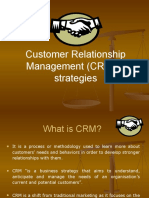0% found this document useful (0 votes)
12 views45 pagesWeek 2 - Lecture - Databases
The lecture discusses the evolution of the Internet and its impact on digital marketing, highlighting the importance of data and databases in customer relationship management. It covers the rise of mobile commerce and the necessity of data for businesses, including types of consumer data and sources. Additionally, it emphasizes strategies for effective digital marketing and customer retention through data-driven approaches.
Uploaded by
huyhd.ftuforumCopyright
© © All Rights Reserved
We take content rights seriously. If you suspect this is your content, claim it here.
Available Formats
Download as PDF, TXT or read online on Scribd
0% found this document useful (0 votes)
12 views45 pagesWeek 2 - Lecture - Databases
The lecture discusses the evolution of the Internet and its impact on digital marketing, highlighting the importance of data and databases in customer relationship management. It covers the rise of mobile commerce and the necessity of data for businesses, including types of consumer data and sources. Additionally, it emphasizes strategies for effective digital marketing and customer retention through data-driven approaches.
Uploaded by
huyhd.ftuforumCopyright
© © All Rights Reserved
We take content rights seriously. If you suspect this is your content, claim it here.
Available Formats
Download as PDF, TXT or read online on Scribd
/ 45





























































































